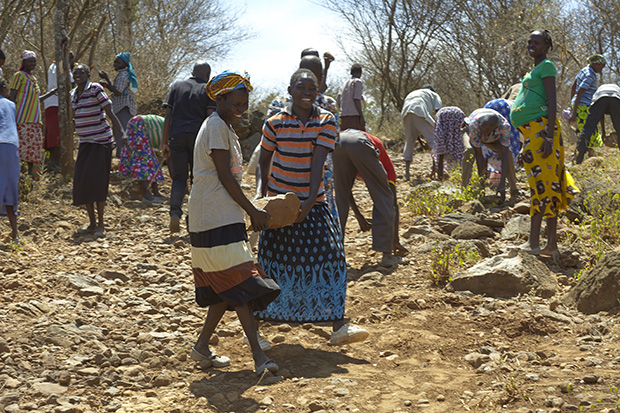The dust whipped through the air as we traversed different villages in Baringo County in Kenya. This is a land of scattered homesteads among the barren plains of sand and stone that has always known lean times: times when the rivers run dry and available dams have either run dry or are witnessing immense low water levels that are not fit for human consumption. Women and children must walk long distances in search of water. This is a pastoralist community, so drought means that the only surviving livestock wither day by day until their bones are scattered under the acacia trees.
Not for the first time, the area has become measurably drier and hotter. Since early last year, severe and widespread drought has walloped the area, causing a rapid escalation in food insecurity that has pushed the poorest of the poor to the edge of survival. In the midst of the drought, government reports showed that nearly 2.7 million people from 23 of Kenya’s 47 counties needed humanitarian assistance.
Our team tapped into decades of experience in transforming communities around the globe through just and sustainable responses to hunger, poverty, displacement and disaster in order to respond. We knew that this prolonged drought called for new ways of thinking. As such, our team decided that a combination of market-based approaches such as cash for work and greater community targeting would be a game-changer in our ability to care for the community’s most vulnerable people in the face of the devastating drought.
But why cash for work? And how were we going to make sure we were supporting the most vulnerable?
We structured our response around three phases. The first was to conduct community engagement sessions among the targeted households to determine community priorities and immediate needs.
The second step was to implement the cash for work response. Based on the community priorities that had been established in the first phase, there were two main activities that participants engaged in: clearing roads and distilling dams. Ahead of time, we purchased and distributed the needed equipment and materials and set up community cash for work management committees.
In an age of mobile money, each project participant was compensated for their work on these community improvement projects via mobile money transfer. Participants receive an average of $66 for their work, and this money helped ensure that they could buy food and other essential supplies needed to get them through the drought period.
We are still in phase three, which is the long-lasting effects of the program. These community improvements were implemented because of the way that they build resilience in the face of future emergencies. The cash for work program brought communities together to think through and plan for disaster preparedness. They had given community teams space to anticipate future climate change-related emergencies and plan their adaptation and recovery strategies. Repaired roads and desilted dams mean better access for community members to important services and clean water that can be used to replenish herds, nurture gardens and ensure that children can attend school.
With all this is place, the community is ready for take-off, on the road to resilience!
See the cash for work manuscript here.

